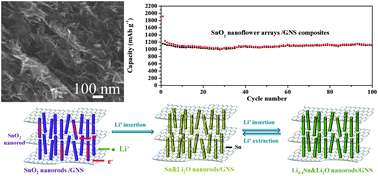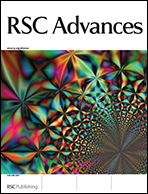Direct growth of SnO2 nanorods on graphene as high capacity anode materials for lithium ion batteries†
Abstract
SnO2 nanorods/graphene nanosheets (GNSs) nanocomposites have been synthesized through a simple ultrasonic combined hydrothermal process, and the formation mechanism of the nanocomposites has been proposed. According to FESEM and TEM analysis, SnO2 nanorods are directly grown and densely distributed on GNSs matrix in such a way that the structure of obtained nanocomposites is analogous to an array structure. The as-prepared nanocomposites exhibit a significantly improved lithium-storage capacity, good cycling stability and high rate capability, e.g. the reversible capacity is kept as high as 1107 mA h g−1 within 100 cycles at a current density of 200 mA g−1, retaining 96.2% of the initial value. The high performance can be ascribed to the unique structure of SnO2 nanorods/GNSs and the synergic effects of GNSs and SnO2 nanorods, in which the direct growth of SnO2 nanorods on GNSs can reduce the stacking of GNSs, provide more reaction sites and facilitate the rapid diffusion of electrons.


 Please wait while we load your content...
Please wait while we load your content...